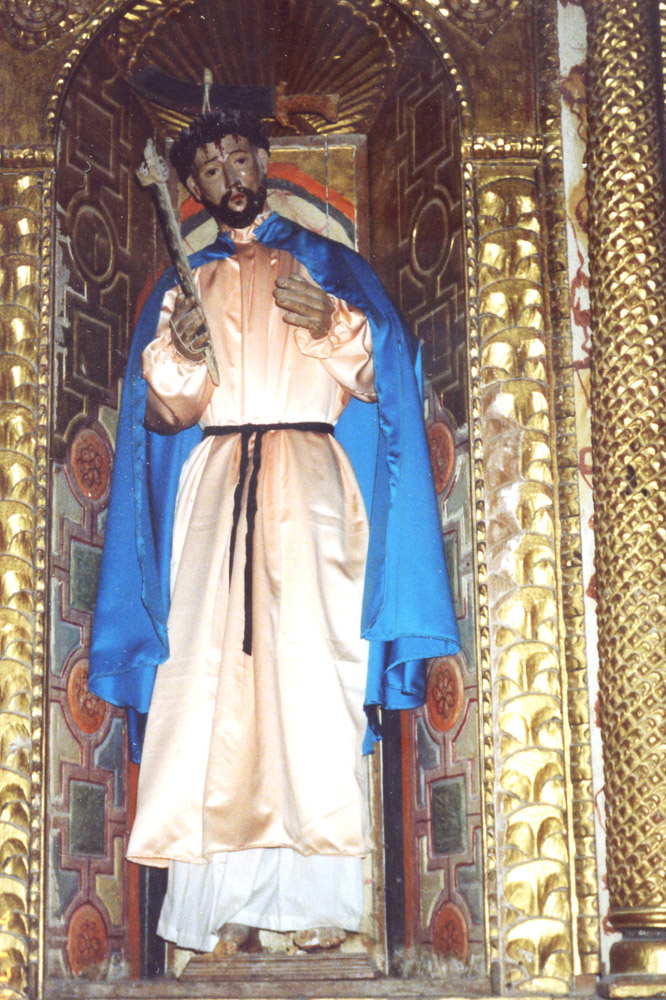|
St. Peter of Verona:
The hands are intact except for the last joint of the
left thumb. They are realistically done, with lifelike
nails and tendons. Inspection of cracks in the hands
reveals they were painted only once, yet the look is
rubbery, even in the face, which however does have some
sheen. The feet are finished to above the ankles; above
that, the legs are painted a dull green.
Local
Name: San Pedro Mártir
Basis for Identification: Machete in head, palm in right
hand, tonsure
Other characteristics: Pink robe with blue cape, white
undertunic
Site: Church of San Miguel Achiutla
Location: Niche in the retablo in the
north wall of the apse (see
note)
Media and Construction: Wood, gesso,
paint, fabric garments. Eyes:
painted. Hair: carved.
Size: About 52 inches (132 cm.)
Comparable santos in Oaxaca: Santa Ana del
Valle, Coixtlahuaca,
Cuilapan,
Etla, Huitzo, Diaz Ordaz,
Teitipac,
Tlacolula,
Yanhuitlán.
External Links:
Wikimedia Commons: Statues
of
St. Peter of Verona in Mexico
Catholic Encyclopedia: St.
Peter of Verona
Wikipedia: Peter
of
Verona
Christian Iconography: Saint
Peter
Martyr
Next: We circle around to the south side of the
apse for Our Lady of
Sorrows ("Soledad").
Previous santo
Introduction to San Miguel
Achiutla
Santos Home Page
Note: On
this
site,
references to the cardinal directions always assume
that the main altar is at the east end of the church,
the narthex or entry area at the west end, and the two
walls
of the nave on the
north and south. (The
nave is the long central section.)
Actual orientations may differ.
The photo shown here is licensed under the
Creative Commons Attribution-Share Alike 3.0 Unported
license. You are free to share or remix it on two
conditions: first, that you attribute it to the
photographers, Claire and Richard Stracke, without
implying any approval of your work on their
part; second, that if you alter, transform, or build
upon this photo, you may distribute the resulting work
only under the same or similar license to this one.
|



